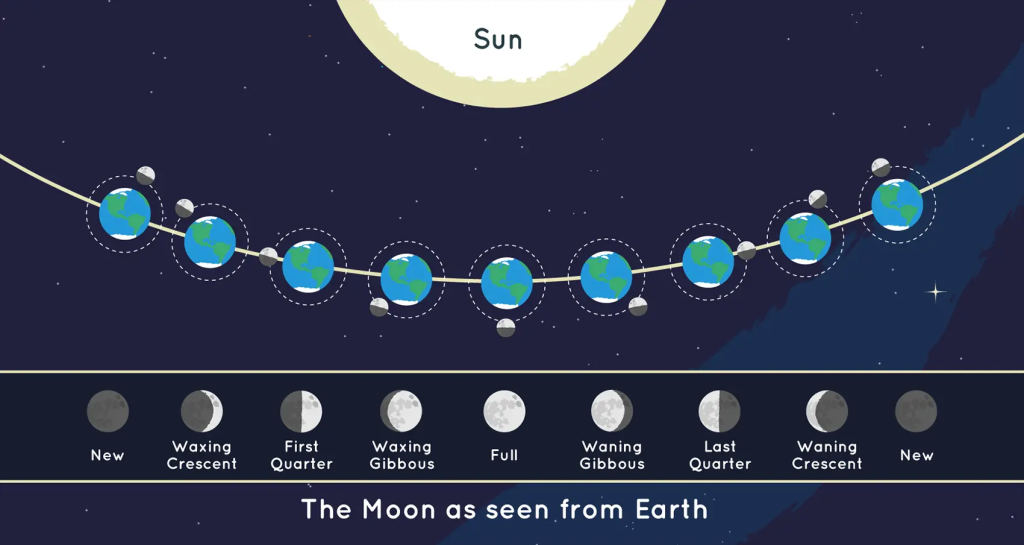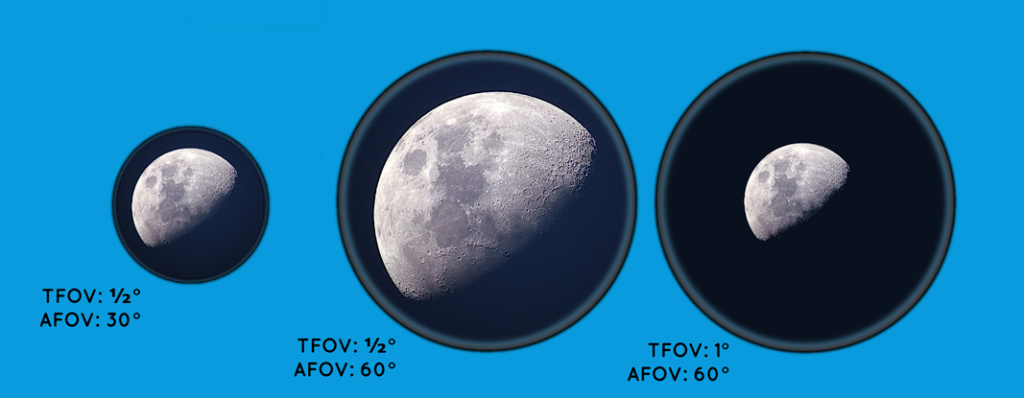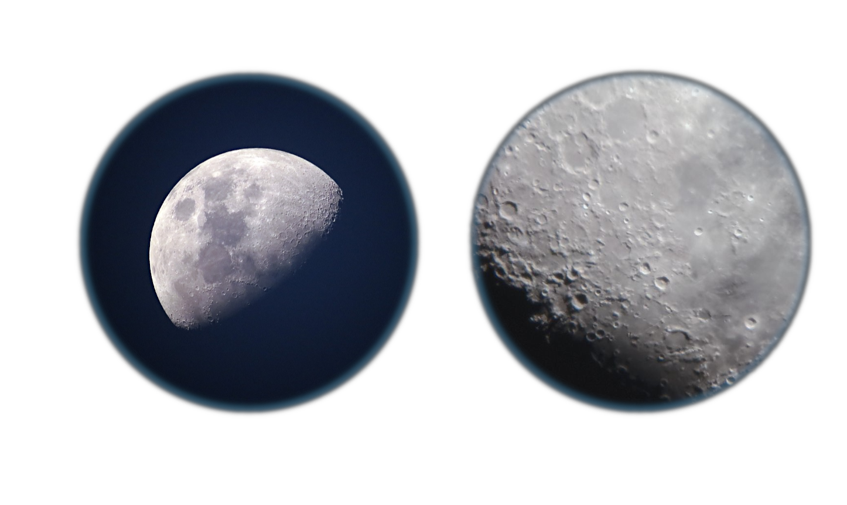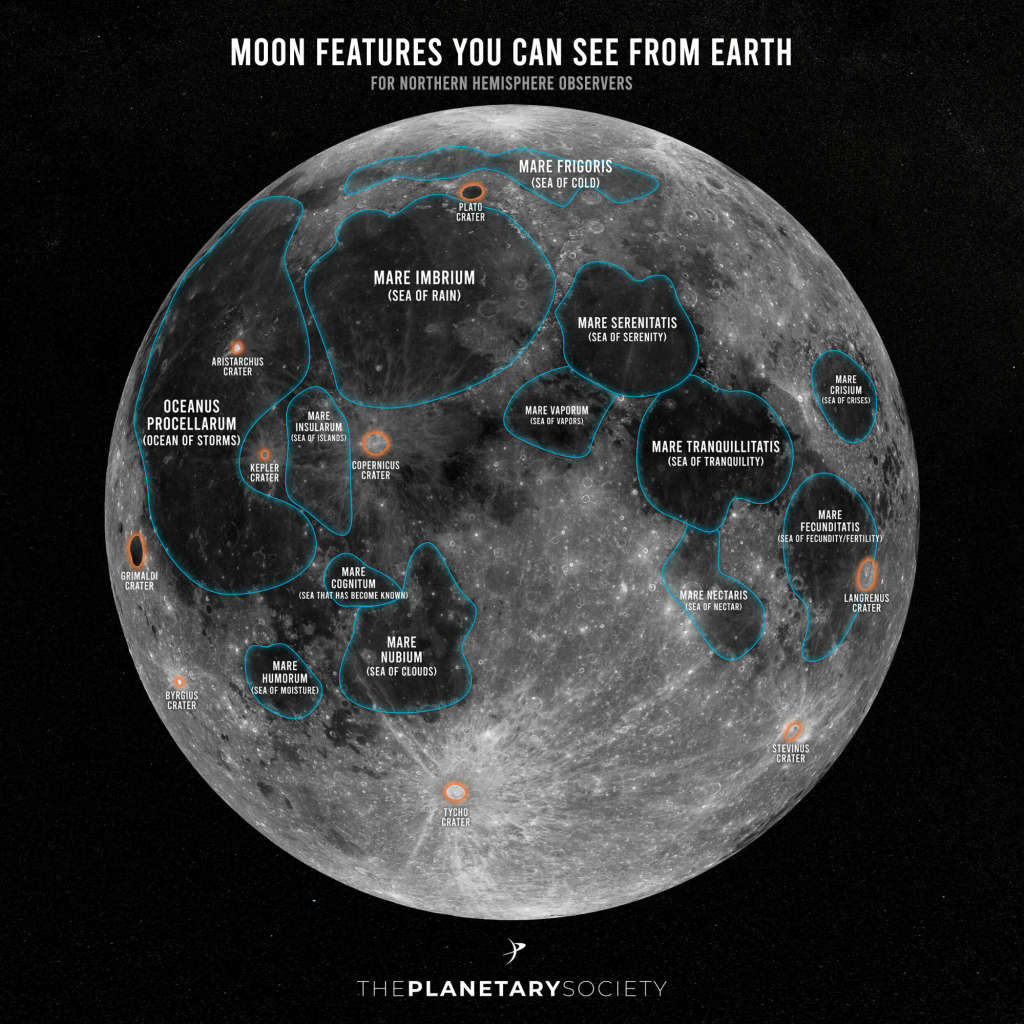Observing the Moon through a telescope offers a convenient and captivating astronomical experience. This comprehensive guide covers essential aspects of lunar observation, from timing and atmospheric conditions to equipment and techniques. The Moon’s predictable phases make it easily accessible, and its topography becomes more pronounced as shadows shift across its surface. Key factors for successful observation include choosing nights with minimal atmospheric turbulence and focusing on the terminator area for enhanced details, but the moon is unique in its accessibility and will always look great. Almost any equipment works well, and additional accessories like filters, Barlow lenses, and lunar maps can enhance the observation experience. Patience, careful observation techniques, sketching, and documentation contribute to a rewarding exploration of the Moon’s beauty and mysteries. This guide equips both novices and experienced astronomers to embark on a journey of lunar discovery and appreciation with their telescope.
Observing the Moon with a Telescope
Besides lampposts and distant towers, the Moon is the easiest thing to look at in a telescope. It follows a predictable cycle and casts bright enough shadows that you can aim at it even without finders. It is immense, occupying half a degree of sky, and is often visible even through trees or when cloudy.

Key Factors in Observing the Moon:
Timing: Unlike all the other “planetary” bodies we observe, there is no moon season. We need to wait at most a week or so (depending on how late you stay up) to get a good look at the Moon.
The Moon is well positioned on about half of all nights, with its phases changing in a predictable pattern. While there is no need to wait for a specific “opposition,” it is still important to choose nights when the Moon is not too close to the horizon; atmospheric dispersion will really soften the view. A waxing gibbous or waning gibbous phase, when the Moon is not completely full, can provide excellent visibility due to the shadows cast by the lunar features. In a similar vein, note that the full Moon is among the worst times to observe the moon with a telescope due to a lack of contrasting shadows.
Weather and atmospheric conditions: The quality of the atmosphere greatly impacts your lunar observations. The atmosphere can significantly affect the clarity of your view, especially when observing at high magnifications. Select nights with minimal atmospheric turbulence to ensure sharp and detailed views of the Moon’s surface features. To assess the atmospheric “stability” – look for how much the stars above shimmer. If they do not visibly shimmer or ”twinkle” much, that means it is a great night for planets!
Author’s note: This is only true when using extremely high magnification. Any night where you can see the moon is a good time to observe the moon at normal magnifications.

Lunar Phases:
The Moon’s changing phases provide a rhythmic cycle for observation. From the waxing crescent to the full moon and back to the waning crescent, each phase presents a unique view of the lunar surface. As sunlight casts shadows across the landscape, the topography of craters and mountains becomes more pronounced. The area near the terminator (the transition from the light side to the dark side) is illuminated at an extreme angle, casting dramatic shadows that set the topography in sharp relief. Only the new moon is invisible and out of reach for observation. The phases immediately before and after (the tiniest crescents) can be especially rewarding, if challenging to observe.
Setting Up and Aiming Your Telescope at the Moon
Begin by assembling your telescope on a stable surface and securing it firmly. If it is on a tripod or small base, make sure you have a way to sit eye-level with the eyepiece; ergonomics is a critical part of observing. Once assembled, calibrate the finder scope by aiming at the moon or a distant terrestrial object during the day, aligning it with the center crosshairs, and adjusting screws on the finder until it and the eyepiece agree. As the Moon becomes visible (day or night), aiming the telescope is straightforward due to the Moon’s brightness. To aim, use your telescope’s altitude and azimuth adjustments to align its finderscope with the Moon’s position in the sky. With the Moon centered in the finder, look through the eyepiece and fine-tune the aiming.
Author’s note: You can also aim at the moon by steering your telescope so that its moonlight shadow becomes a circle.
Focusing is crucial for a sharp lunar image. Adjust the telescope’s focus knob while observing the Moon until its features appear sharp and clear. Your telescope may be way out of focus, especially if you have a Barlow lens in the drawtube. Practice this on nearby objects if you are new to using telescopes.

What Telescope Should I Get/Use?
Though I discuss the optimal telescopes below, the moon is a huge and very forgiving target; binoculars and toy telescopes will give an appreciable view if at low power. The best telescope is the one you use.
The Moon’s brightness can create a challenge when using achromatic telescopes like the PowerSeeker 70AZ, 80AZ, and similar models, as they tend to show quite a bit of false color. For beginners who want to start observing with telescopes, it is better to go with reflectors or medium cassegrain telescopes. Those who are more experienced will enjoy looking through bigger scopes, especially on calm nights.
It is important to find a middle ground with the size of your telescope’s aperture. Going too big might mean you are waiting a long time for perfect conditions. If you are more of a pro, you can choose larger scopes, but it is still important to find a balance that suits the atmospheric conditions. Telescopes with apertures between 114mm and 200mm offer a good mix of sharpness and magnification for checking out the Moon.
Advanced users will enjoy using huge reflectors and cassegrains, but only if the sky conditions allow it. People who observe near-polar jet streams can make use of tricks like apodizing masks or stop-down masks to deal with shaky skies. If you have a premium refractor, you probably already know it is good for planets. To eke out fine details, starting at around 100–200x magnification is a good idea (and if your telescope’s aperture is 114mm or smaller, it is best not to go higher). If the conditions are right, experienced folks might like higher powers, like in the 300–400x range. To get to these powers, a good small eyepiece is the way to go.

A premium eyepiece with a wide field, like the 82-degree Naglers, Explore Scientifics, Meade or Astrotech UWA’s, or others, will act like the middle eyepiece. Something in the 13 to 16 millimeter range would produce medium-high power, with the whole moon filling your view.
However, discrete and inexpensive high-power eyepieces like the SVBony redline/goldline (6 or 9mm) or the Agena starguider ED eyepieces will produce very sharp views on their own and let you home in on specific surface features.

Common Questions:
- Does light pollution hurt the view in a telescope?
The Moon and planets are exceedingly bright. While light pollution is harmful to humans, animals, and especially the night sky, it does not affect the views of planets or the moon in any way. This means they are especially accessible for observing, no matter where you observe from. Hobby astronomers in areas with bright skies will do well to get acquainted with solar system observing and find new ways to push themselves. See the challenge section below.
- What if I don‘t have equipment?
Get a telescope! However, a good, hard look will reveal many distinct areas of the lunar surface. This map here shows many areas that can be seen with the naked eye and further explored with a telescope. A proper lunar atlas, much too large to include here, is needed to cross-reference telescopic observations with named features.

Will it look like a NASA photo? The moon is an exceedingly high-contrast object; by using good eyepieces (we will discuss these below), you can get outstanding views of the moon. On perfect nights and with a great telescope, you can spot features as small as a kilometer on the lunar surface; massive telescopes can resolve even smaller features.

Atmosphere and telescopic resolution limit the size of the finest details we can see on Mars; imagine a blurring of neighboring points of detail into bright and dark smears, called “albedo” features. This includes mountains, polar caps, and canyons, among other details. Study the map above and compare it with photographs. Many of these are simply darker terrain, but some features correspond to interesting topographic details.
Challenges for Lunar Telescope Observing:
The moon gives the most detailed view of any celestial body, by far. There are a handful of ways to push yourself into lunar observing:
- Lunar 100: This observing challenge has you cross-reference verses a map across many phases (not all features are visible at once; some, such as deep canyons, need to have the Sun shine on them just the right way)
- Smallest feature: Features a few kilometers across are not hard to find in a telescope at high power. But just how far down can you resolve? A fun challenge is to cross reference with a lunar atlas, trying to note the smallest surface feature you can see. Canyons are much easier to see than craters when the light hits them right, and they are often as narrow as 500m.
- Thinnest Crescent: How close to the new Moon can you spot it in the sky and observe it in a telescope? The crescent phases are especially rewarding to look at, with new features set in stark relief by the sunlight. The crescents are invariably seen near sunrise or sunset and thus take on interesting colors as the moon sits low in the sky.
Extra Telescope Accessories for Advanced Lunar Observations:
Filters: Filters can enhance lunar observation by reducing glare and enhancing contrast. A neutral density (ND) filter can help tone down the Moon’s brightness, revealing finer details. Colored filters, like a blue filter, can emphasize certain features, such as craters or maria. Experiment with different filters to discover the ones that enhance your preferred aspects of lunar observation.
Barlow Lens: A Barlow lens increases the effective focal length of your telescope, magnifying the lunar image. This accessory can be useful for zooming in on specific features and achieving higher levels of detail (only if the atmosphere supports it that night). While many find a discrete eyepiece is sharper than a Barlow lens and an eyepiece, they are a valuable tool and can increase the range of magnifications to choose from.
Moon Map or Atlas: A detailed lunar map or atlas can aid in identifying specific features on the Moon’s surface. It’s a valuable reference tool for locating craters, mountains, and other formations
Brightness Filters: Use or leave?
This is a matter of contention. Many users, especially novices or those with very large telescopes, will describe the brightness of the moon as overwhelming. Others will shrug it off. Whether a filter enhances, worsens, or simply makes the view more tolerable is up for debate. But neutral density filters are inexpensive and work well.
Author’s note: I observe the moon with a wide range of telescopes, up to 16 inches in aperture at the time of writing. The brightness is intense but will not hurt you. I do not bother with lunar filters—not out of preference, but simply because filters are one more thing to fiddle with in the dark.
Lunar Observing Techniques
Give the Moon a good, long stare. Patience is the key to revealing the Moon’s beauty. Wait for moments of steady seeing to maximize the clarity of your view. Experiment with various eyepieces to find the right magnification for capturing lunar features, allowing you to explore different scales of the landscape. Some nights will permit higher magnification than others; cross-reference against a map with a scale legend if you are trying to push yourself on feature size (my current record is 500 meters).
Sketching and note-taking: Sketching and taking notes during lunar observations is both rewarding and educational. Sketches capture your personal view and help you observe subtle details. Accurate documentation, including the date, time, lunar phase, and observed features, creates a valuable record of your observations over time.
Gazing at the Moon through a telescope is always enjoyable. Get ready to be moonstruck, and see the moon in a brand-new way. Because the Moon is one of the easiest and most rewarding targets in hobby astronomy, and it’s not going anywhere.
